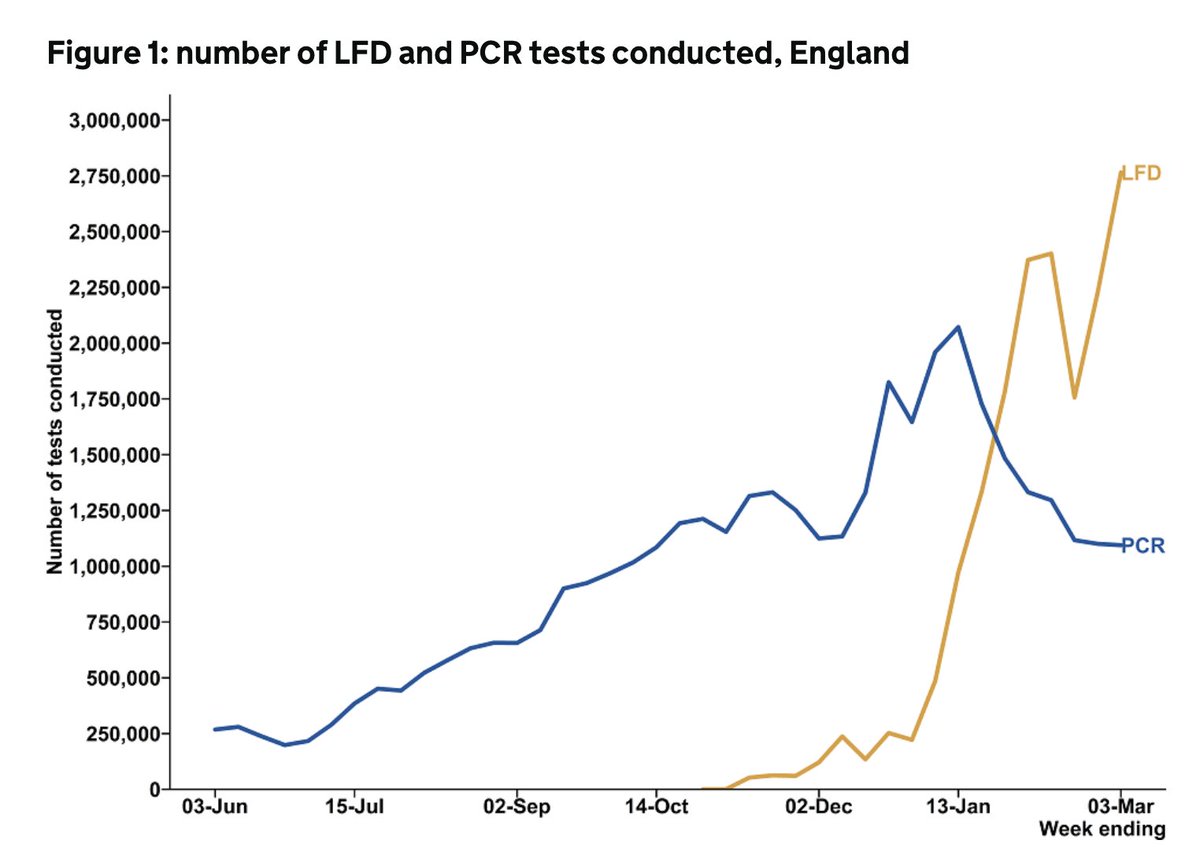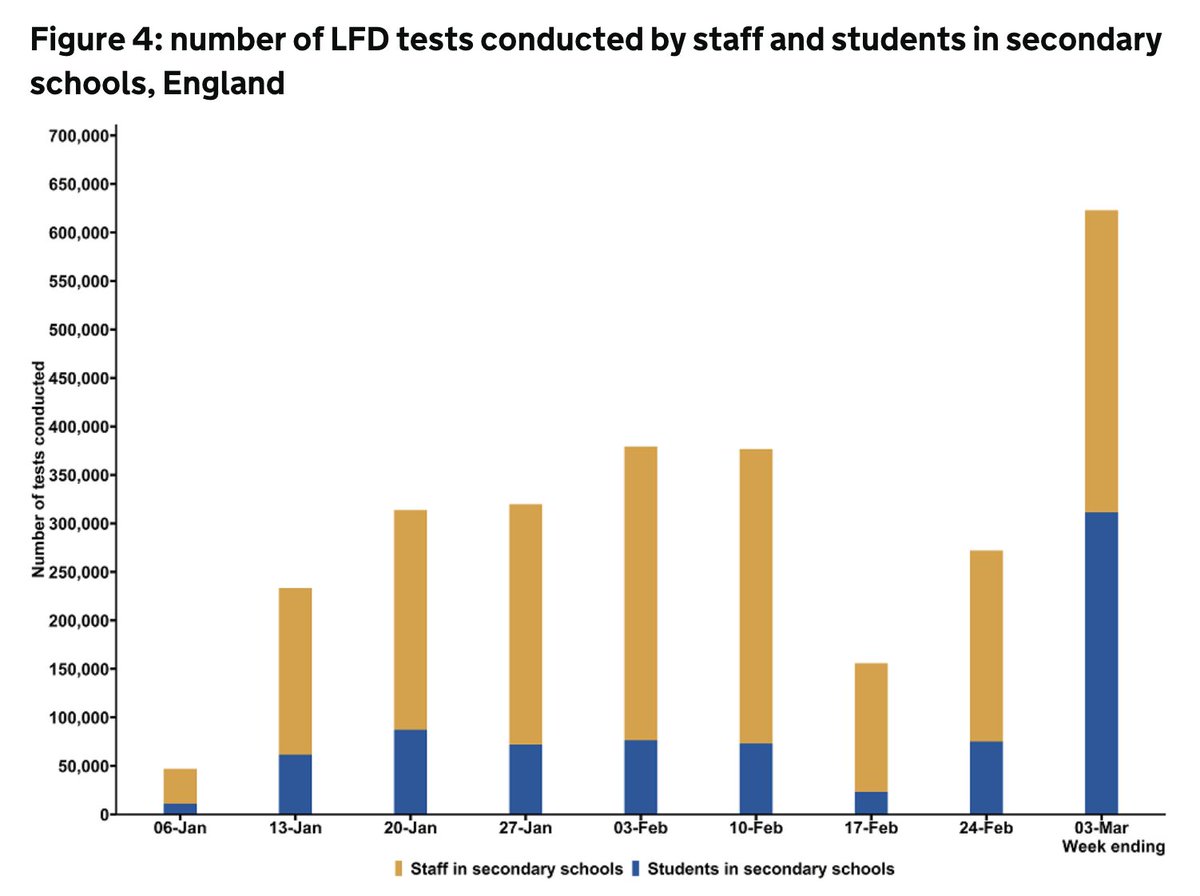
If this is true, it is so disappointingly shortsighted.
I hope that @MattHancock and @Jochurchill4 will reconsider.
A quick walk through the evidence. 🧵
I hope that @MattHancock and @Jochurchill4 will reconsider.
A quick walk through the evidence. 🧵
https://twitter.com/MrHarryCole/status/1375572196584685573
Nearly one in four reception age children and one in three children at year 6 are overweight or obese.
And there are stark inequalities - children in yr 6 are *more than twice* as likely to be obese if living in the most deprived areas compared to the least.

And there are stark inequalities - children in yr 6 are *more than twice* as likely to be obese if living in the most deprived areas compared to the least.


The government is aiming to halve childhood obesity by 2030 and reduce inequalities.
You can't do this with one or two policies here and there. Obesity is complex and multifaceted. To make any kind of dent, you need a multifaceted solution.
health.org.uk/publications/l…
You can't do this with one or two policies here and there. Obesity is complex and multifaceted. To make any kind of dent, you need a multifaceted solution.
health.org.uk/publications/l…
Interventions can act at the individual level - like weight mgmt services. Or at the population level - like soft drink tax or education
Individual level policies support people at high risk, whereas pop level affect everyone. They 'shift the curve' often meaning ⬆️ health gains
Individual level policies support people at high risk, whereas pop level affect everyone. They 'shift the curve' often meaning ⬆️ health gains

And among the population level interventions, some are better for improving health and narrowing inequalities than others.
For example, healthy advertising campaigns need people to see the ad, read it, understand it, and then change behaviour before any benefit.
And each of these steps is socioeconomically patterned - i.e. people who are wealthier, more educated, have more time, etc benefit more.
And each of these steps is socioeconomically patterned - i.e. people who are wealthier, more educated, have more time, etc benefit more.
By contrast, the soft drinks levy & reformulation means people can benefit without any behaviour change at all.
These 'low-agency' policies not only have greater health benefits but are more likely to narrow inequalities.
See this ace @jeanmadams paper
journals.plos.org/plosmedicine/a…
These 'low-agency' policies not only have greater health benefits but are more likely to narrow inequalities.
See this ace @jeanmadams paper
journals.plos.org/plosmedicine/a…
The total ban on online advertising is an example of a low agency population level intervention.
It is well known that advertising affects children’s food choices, both what is consumed & what is purchased.
⬆️unhealthy ads = ⬆️unhealthy food bought & ⬆️ unhealthy food eaten
pubmed.ncbi.nlm.nih.gov/30576057/
pubmed.ncbi.nlm.nih.gov/27427474/
pubmed.ncbi.nlm.nih.gov/29650023/
pubmed.ncbi.nlm.nih.gov/25713968/
⬆️unhealthy ads = ⬆️unhealthy food bought & ⬆️ unhealthy food eaten
pubmed.ncbi.nlm.nih.gov/30576057/
pubmed.ncbi.nlm.nih.gov/27427474/
pubmed.ncbi.nlm.nih.gov/29650023/
pubmed.ncbi.nlm.nih.gov/25713968/
And whilst the prohibiting of advertising unhealthy food products during programmes aimed at children in 2007 had an impact, children’s exposure to unhealthy food adverts remained *the same*.
Manufacturers instead promoted their products during family programmes.
Manufacturers instead promoted their products during family programmes.
Since 2007, children increasingly view content online rather than TV.
Advertisers have followed suit.
Despite a 2017 ban of online unhealthy food ads aimed at kids, 33% of websites & 95% of YouTube channels aimed at kids still carried these ads.
asa.org.uk/uploads/assets…
Advertisers have followed suit.
Despite a 2017 ban of online unhealthy food ads aimed at kids, 33% of websites & 95% of YouTube channels aimed at kids still carried these ads.
asa.org.uk/uploads/assets…
Furthermore, recent modelling suggests that limiting children’s exposure to HFSS advertising on TV before 9pm may lead to 40,000 fewer children with obesity and a health-related saving of £7.4bn.
journals.plos.org/plosmedicine/a…
journals.plos.org/plosmedicine/a…
Plus, I'm not sure where the 700 calories modelling has come from, but even if it is the right ballpark, it's an *average*
Those most exposed to the adverts will be the most impacted and will have the most the benefit.
Again, likely not just benefiting health, but inequalities.
Those most exposed to the adverts will be the most impacted and will have the most the benefit.
Again, likely not just benefiting health, but inequalities.
Finally, while the ad ban will be important, note it still won't be enough on its own.
We must also tackle the root causes of ill health and inequalities – the environmental, economic & social conditions that determine health, opportunity & wellbeing.
health.org.uk/publications/r…
We must also tackle the root causes of ill health and inequalities – the environmental, economic & social conditions that determine health, opportunity & wellbeing.
health.org.uk/publications/r…
For example, the most affluent parts of the country have on average five times the amount of green space but a fifth of the fast food outlets than the most deprived areas.
gov.uk/government/new…
assets.publishing.service.gov.uk/government/upl…
gov.uk/government/new…
assets.publishing.service.gov.uk/government/upl…
And of all the fun places to write about this stuff, with @louisemarsha11, we outlined these arguments in @Telegraph last year.
This is not about some false dichotomy of business vs health. Health is an asset, and it is crucial to our economic recovery.
telegraph.co.uk/global-health/…
This is not about some false dichotomy of business vs health. Health is an asset, and it is crucial to our economic recovery.
telegraph.co.uk/global-health/…
• • •
Missing some Tweet in this thread? You can try to
force a refresh





















